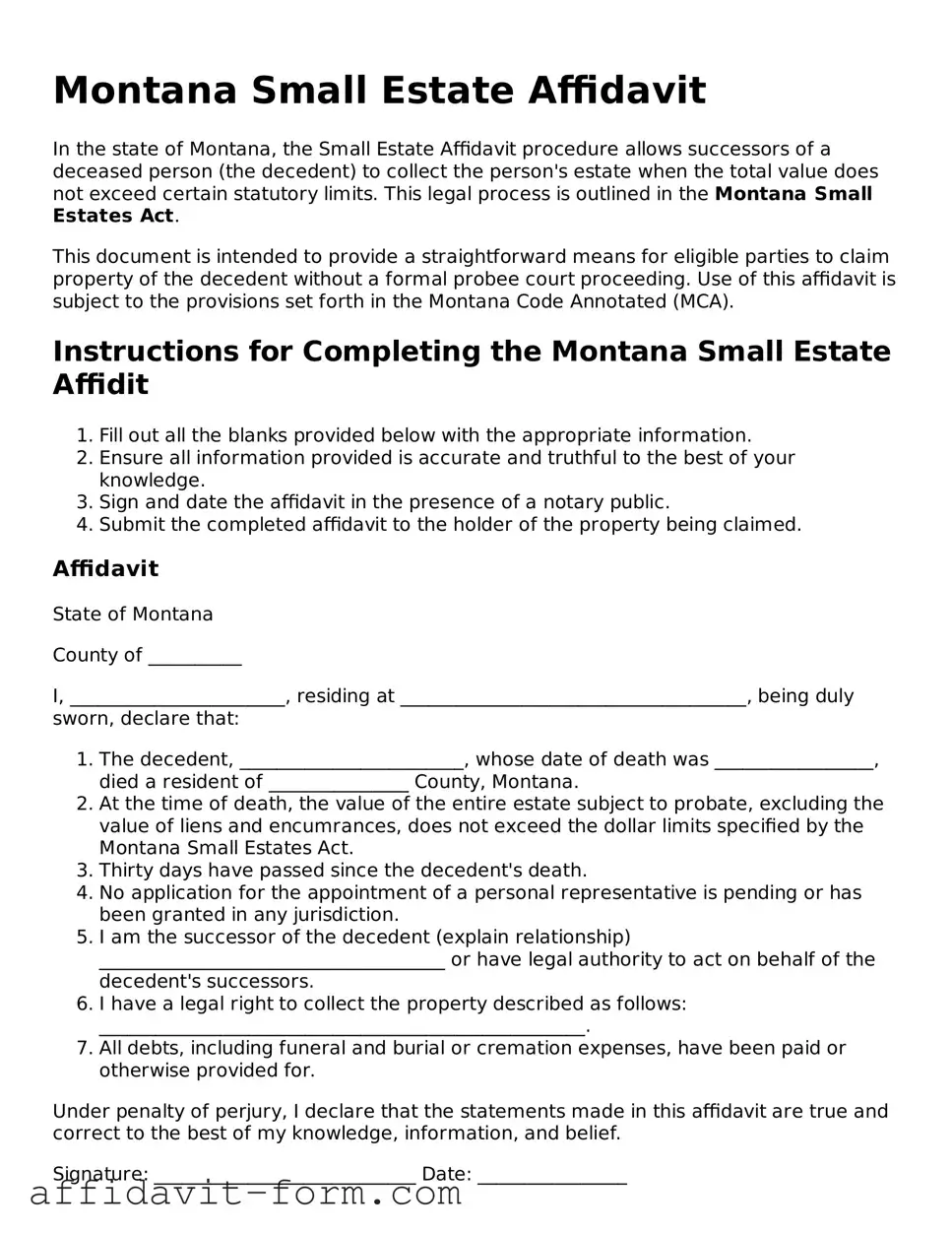Montana Small Estate Affidavit
In the state of Montana, the Small Estate Affidavit procedure allows successors of a deceased person (the decedent) to collect the person's estate when the total value does not exceed certain statutory limits. This legal process is outlined in the Montana Small Estates Act.
This document is intended to provide a straightforward means for eligible parties to claim property of the decedent without a formal probee court proceeding. Use of this affidavit is subject to the provisions set forth in the Montana Code Annotated (MCA).
Instructions for Completing the Montana Small Estate Affidit
- Fill out all the blanks provided below with the appropriate information.
- Ensure all information provided is accurate and truthful to the best of your knowledge.
- Sign and date the affidavit in the presence of a notary public.
- Submit the completed affidavit to the holder of the property being claimed.
Affidavit
State of Montana
County of __________
I, _______________________, residing at _____________________________________, being duly sworn, declare that:
- The decedent, ________________________, whose date of death was _________________, died a resident of _______________ County, Montana.
- At the time of death, the value of the entire estate subject to probate, excluding the value of liens and encumrances, does not exceed the dollar limits specified by the Montana Small Estates Act.
- Thirty days have passed since the decedent's death.
- No application for the appointment of a personal representative is pending or has been granted in any jurisdiction.
- I am the successor of the decedent (explain relationship) _____________________________________ or have legal authority to act on behalf of the decedent's successors.
- I have a legal right to collect the property described as follows: ____________________________________________________.
- All debts, including funeral and burial or cremation expenses, have been paid or otherwise provided for.
Under penalty of perjury, I declare that the statements made in this affidavit are true and correct to the best of my knowledge, information, and belief.
Signature: ____________________________ Date: ________________
Print Name: ___________________________
Subscribed and sworn to before me this _____ day of ______________, 20__.
Notary Public: ___________________________________
My commission expires: ___________________________
This Montana Small Estate Affidavit template is intended as a general guide and does not constitute legal advice. The requirements for a small estate affidavit may vary depending on specific circumstances, and it may be advisable to consult with a legal professional to ensure compliance with all applicable laws and procedural rules.
